Here we are in February, friends. It’s hard to believe that just six weeks ago we were celebrating the holidays and then ringing in a new year.
January seemed to go by in a flash, and my mind is mostly on all-things-growing-season at the moment.
While we had our winter wonderland snowfall two weeks ago and then brutally low negative temps the past two days (it was -16 degrees at the lowest with a ‘feels like’ temp of -32 and -30-50 degree windchill), we’re starting to count the weeks until Spring (it’s six…just six!) and looking forward to less harsh temps and weather for the animals.
The winter and summer can both be so hard on them, so our hearts will rest a little easier once they get a reprieve. I say that, fully expecting that we’ll have some more cold and snow possibly even into April.
With all the winter weather outside, I’ve been cozied up inside organizing my seeds, reviewing my gardening notes from last year, learning a million new things at rapid-fire speed via YouTube videos and blogs (that I watch and read when I’m on the treadmill at the gym), and putting together a plan with Chris for this year’s gardening endeavors.
I remember how I felt at this time last year—eager to learn and ready to get started in the garden but a lot of trepidation about whether or not it would go well.
All that worrying was so silly.
Last year’s gardening taught me that nature really does run the show and that if I keep a positive attitude and treat the whole of gardening like one big learning experiment, then not only can I not fail, but it’s so much more fun (and less pressure) that way, too.
This is true in so many areas of life!
Lord knows there are a million life metaphors related to gardening…cliches, even. But I’ll be first to testify of their truths. I had no idea the ways gardening would ease my soul, boost my confidence in and out of the garden, become the place where I retreat from the world, and where I’ve found so much joy, purpose, and meaning.
So I’ll talk more about this year’s garden plans in a few weeks as I get more of my plans in place.
This week I thought I’d share with you a quick teaser of four things we have in motion to give you a little behind-the-scenes peek at some of the planning we’re doing at the moment!
Here’s the short list below and each week this month I’ll walk you through each of the projects one by one…sound like a plan?!
Here’s the short list:
We put down a deposit for Sheep!
I am writing a book…well, at least partially…
This year’s growing season is all-things flowers
Making new pastures for the donkeys
So, for this week, the first week of February, let’s dive into the deets on Sheep!
I’ve mentioned before in Instagram “Ask us Anything” Q&As that Chris and I are interested in working with heritage breed (and) endangered farm animals.
That is not a sentence I thought I’d ever type…but such is life!
The Livestock Conservancy is an organization I became fascinated with upon moving to the farm.
Here’s a blurb from their mission (their site linked directly above if you’d like to check them out) to give you an idea of what they do:
“The Livestock Conservancy is a nonprofit membership organization. Our mission is to protect endangered livestock and poultry breeds from extinction. Included in our mission are over 150 breeds of donkeys, cattle, goats, horses, sheep, pigs, rabbits, chickens, ducks, geese, and turkeys.
“To put our mission into context, in 2006 the United Nations Food and Agriculture Organization (FAO) estimated that we lose an average of 2 domestic animal breeds each week. In the past fifteen years alone, the FAO has identified the extinction of 300 out of 6,000 breeds worldwide, with another 1,350 in danger of extinction. The Livestock Conservancy is the leading organization working to stop the extinction of these breeds in the United States – ensuring the future of our agricultural food system.”
Biodiversity isn’t just important for plants, it’s essential for our animal food systems, too. Each time we lose another livestock and poultry breed to extinction, not only do we lose more of this world’s precious creatures, but we increase the vulnerability of our food systems, too. Much of this livestock and poultry extinction is due to factory and multinational conglomerate farming, and also, in part (and important to mention), because of marketing and consumer choice.
For example, if Angus beef is the “gold standard” of beef according to consumers and will yield the best price per pound for a farmer, that farmer is going to be more inclined to sell all Angus to satisfy the customer. It doesn’t mean that Angus beef is bad, but a world full of only Angus (Angus is the breed of cattle) is a detriment to the biodiversity of cattle. Both consumers and farmers play an important role in this balance.
Additionally, most livestock and poultry are bred today for characteristics of maximum weight and output; cows that produce the most milk, chickens that grow to full-size the fastest so they can be processed in a shorter amount of time, and cows with the perfect fat content and marbling. Because the focus is on size and output, there’s less focus on overall health, longevity, and diversity of breed. The more we (we as both consumers and the producers) opt for bigger, better, and more, the more we risk this precious biodiversity, too.
That all sounds kind of depressing and fraught with fault and blame, and it’s not meant to in the least. The takeaway is the importance of more of us finding and working with farmers and/or supporting nearby or local farms, especially if you can find farmers who raise heritage breed animals. For example, the duck and goose we had for Christmas and the New Year came from a nearby farm that raises only heritage breed pigs, ducks, and geese. By supporting these farmers we’re not only keeping more small American farms (and others globally) in business, but we’re preserving precious biodiversity, too.
The other glimmer of hope to be found is the growing number of small-scale farmers, hobby farmers (that’s us!) and homesteaders (I guess that’s kind of us, too!), who are getting into raising heritage breed animals and especially breeds that are on the Study, Watch, Endangered, Critical, and Recovering lists that The Livestock Conservancy maintains. Typically, these heritage breeds also have characteristics that are better suited for smaller-scale farming operations.
Which brings me to the sheep.
We’re interested in the breed of sheep called the Old English Southdown Babydoll.
Here’s some photos of some lambs which will tell you exactly why I’ve fallen instantly in love with them…
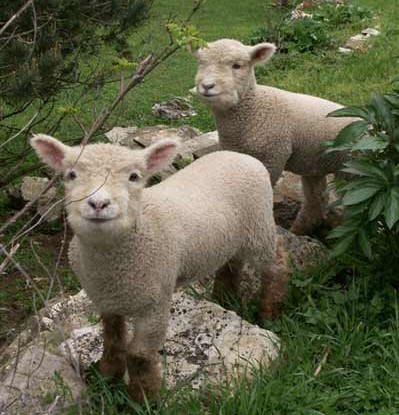
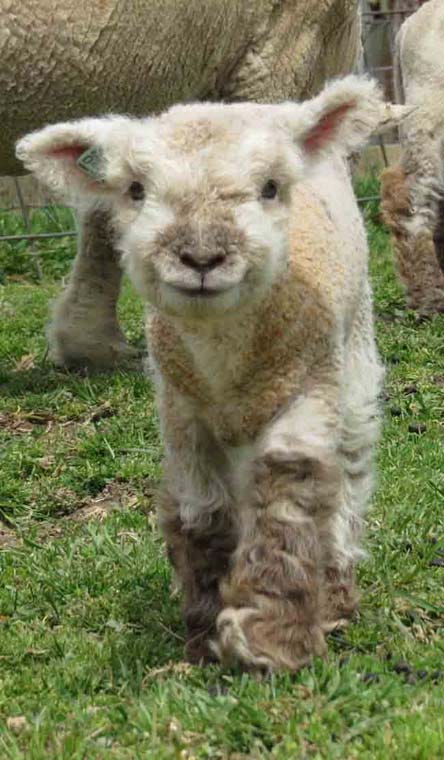
Don’t they just look like little smiling teddy bears? They’re simply the best!
Old English Southdown Babydoll sheep are thought to be one of the oldest breeds of sheep. Fast forward (like way forward) and World War I saw a drastic decline in their numbers and by World War II, as consumers looked to larger cuts of lamb meat (more on this in a sec), they were nearly extinct. At their worst, there were about 300 Old English Southdown Babydoll sheep remaining. Today, their numbers have steadied as their application has become more practical for smaller farms and orchard operations.
The primary reason for their almost-extinction is their size. Old English Southdown Babydoll sheep only get to be about 17-24 inches tall and about 60-125 pounds. For the production of lamb meat they’re perhaps not an ideal breed in a “bigger is better” kind of world, but their wool can be valuable in various applications and they make excellent additions to small farms because their small size make them easier to handle, and because the rams naturally do not have horns.
They’re particularly good for smaller fruit or veggie farms, flower farming and orchard operations, given their small size. They don’t tend to stand up on their hind legs and eat fruit tree branches (and in some cases cannot even reach them), and because of their short stature they’re excellent for grazing in orchards to maintain the orchard and improve the soil.
Those characteristics make them perfect for us—a smaller breed that is easy for either myself or Chris to handle individually (for things like hoof trimmings and shearing, etc.) and to graze them in our current orchard, which we’d like to expand in the coming years, as well as around our gardens.
I found a farm who raises registered (registration ensures their genetics) Old English Southdown Babydoll Sheep that we’d like to work with and we put a deposit down this year for 2-4 lambs!
This farm is expected to have 25-30 lambs due in April, and we’re quite a ways down on their waiting list, so it’s looking more than likely that we’ll have lambs in 2024 unless people on the list ahead of us either change their minds or take less lambs.
While I’m eager to get started with them sooner, I believe things happen for a reason, and each time we’ve been slowed down by other circumstances here on the farm, I take it as a nod from The Universe to go slowly, to be patient, and to do the best we can with what we have where we are, and to continue to build upon that slowly…
…that all things will happen in the timing and the season they’re meant to.
We don’t have a fully-formed plan in terms of whether we’ll breed the heritage animals we add to our farm. That’s a whole different ball game that I’m just now starting to learn more about. However, we think we can do our small part in conserving endangered species and raising heritage breeds by raising a few on our farm, learning more about their breeds, and hopefully educating others along the way, too.
That, and we fully plan to turn the sheep into our little orchard and garden managers. Their presence on this farm will not only add a whole heck of a lot more cuteness and laughter to the mix, but it’ll greatly improve the soil quality and sustainability of our farm, which is something I’ve become increasingly passionate about in general in the last few years as it relates to Regenerative Agriculture. More on that in a future Farm Note.
So hopefully today you learned a little something and that you now feel like you can look forward to sheep, too!
As always, we’re more than happy to answer any of your questions—about farming, livestock conservation, the food industry, regenerative agriculture, or sheep—in the comments below, so ask away!
We’ll be sure to fill you in as soon as we get the word about this year’s lambs from the farm we’re working with once they’re born!
For now, let me leave you with some more adorable photos of Old English Southdown Babydoll sheep so you can prepare yourself for all the cuteness to come!!
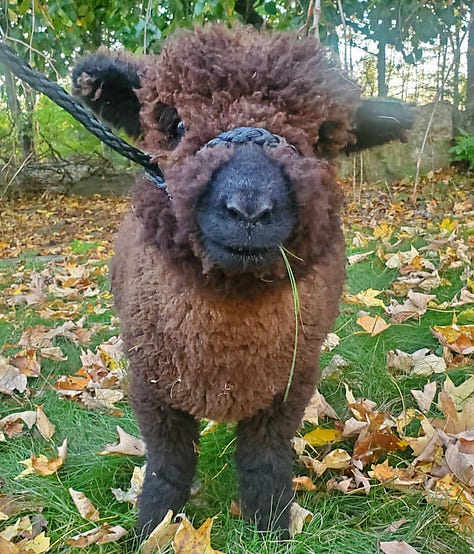
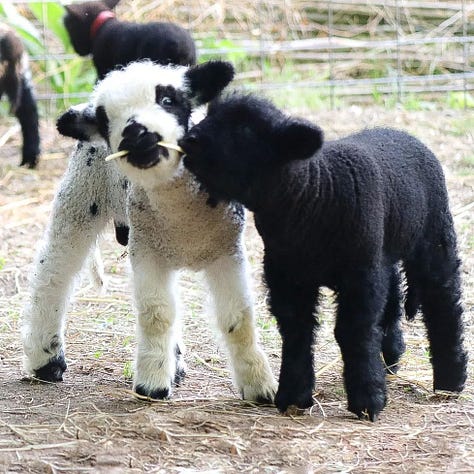
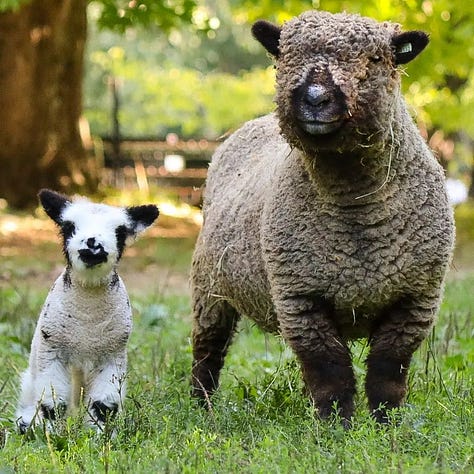
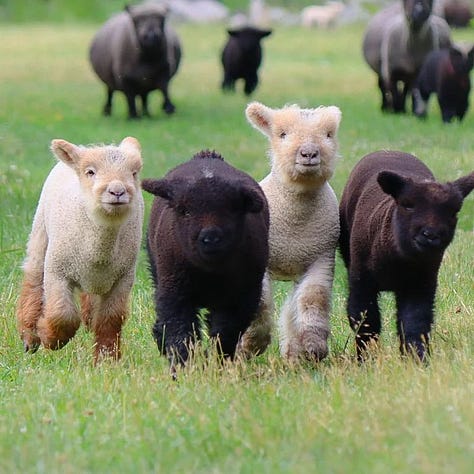
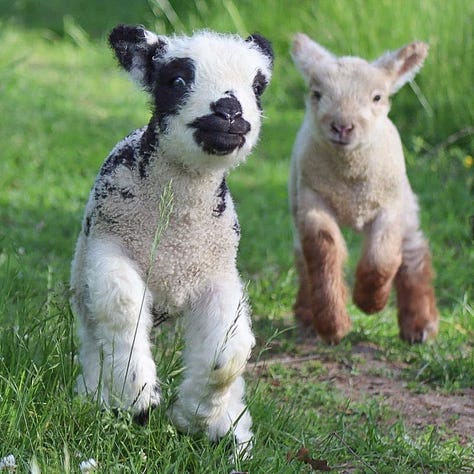
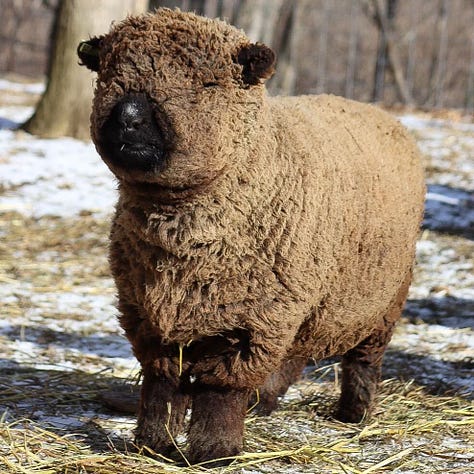
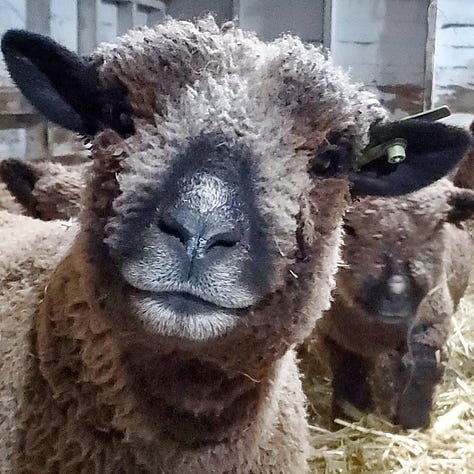
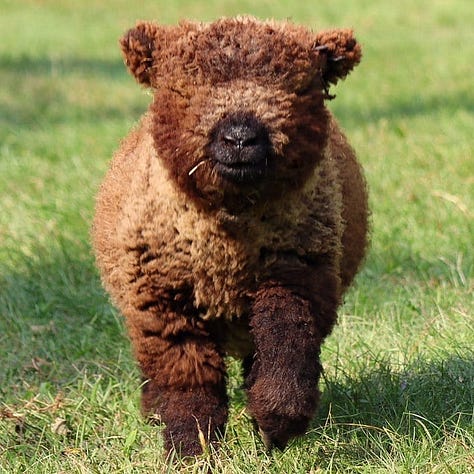






Such cute little critters! I can't wait until you have these babies at LDF.
As a gardening reference I recommend a website called Dave's Garden. Lots of info on each plant including USDA hardiness, light requirements, etc. Also included is input from readers on their experience with the plants and their photos.
Lots of informative articles from the editors, too.
They are so cute! This is exciting! 😊🐑 will you ever open the farm to the public or keep it private?